The Electrofusion 45° elbow is a critical component in contemporary piping systems that guarantees effective and dependable connections. This specialty fitting is necessary for different applications like water distribution, gas supply, and industrial processes as it aids in pipeline direction turning. This article will tackle comprehensive information about Electrofusion 45° elbow, such as its construction, advantages, and installation procedures. Understanding how this fitting can be used and its benefits will improve your general understanding of plumbing systems, whether you are a novice or an expert in this field. Discover the complexities of the Electrofusion 45º elbow and why it is essential in efficient fluid movement.
What is an Electrofusion 45° Elbow, and How Does It Work?
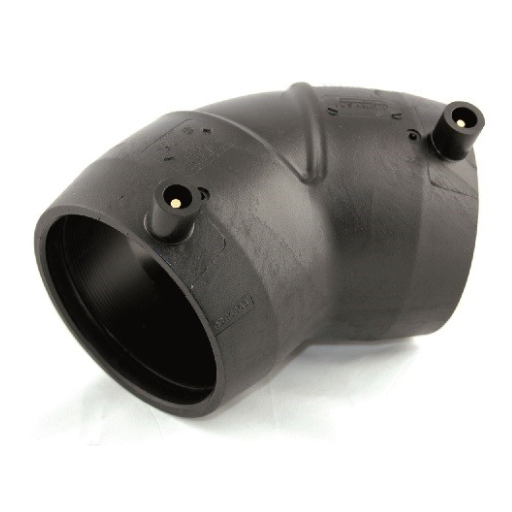
Image source: https://www.acu-tech.com.au/
An Electrofusion 45° elbow is a fitting that alters the flow course through pipelines by forty-five degrees. It is made from materials like polyethylene, which makes it strong enough to resist corrosion over long usage periods. An electrofusion elbow works using electrical resistance heating. By connecting it to an electrofusion control box, an electric current passes through internal heating elements that melt the material at the joint. This results in a powerful bond between the pipe and the elbow because they fuse perfectly, creating impermeable links needed for reliable flow passage across various industries. The simplicity with which it can be fixed and reliable linkage makes Electrofusion 45º elbows most suitable for modern pipework solutions.
Definition and Function of Electrofusion 45° Elbow
Pipes systems have fittings such as the Electrofusion 45° elbow, which can change the fluid or gas direction by forty-five degrees. The Electrofusion 45° elbow is a unique fitting applied in different piping systems where there is a need for a change in the flow of liquids or gases by forty-five degrees. It is predominantly manufactured from high-density polyethylene (HDPE), which acts as a good protector against ultraviolet light and is corrosion-resistant. Essentially, the electro-fusion elbow operates through a control box, and an electrical current is supplied via heating elements located within the fitting. This ensures that heat melts down the polyethylene at the joint, allowing it to cool and form a strong bond with the pipe, thereby providing the efficiency and integrity of fluid-carrying systems. The design increases the strength of connections to boost connection life while at the same time making installations easier than traditional welding processes.
Comparison between Electrofusion and Butt Fusion
Electrofusion and butt fusion are two widely used methods for joining piping systems; each has its unique advantages and applications associated with it. For example, electro-fusion uses electric current for joint heating and bonding, hence suitable when dealing with different types of fittings and limited space during installation. Besides, these connections are homogeneous, so they do not easily break away even if subjected to more stresses, including those caused by temperature changes.
On the other hand, butt fusion entails melting the ends of two pipes together until they adhere together. The butt fusion method is commonly preferred because it is both simple and efficient, particularly in large-diameter pipes or long runs where there may be higher benefits resulting from solid joints only. Although butt fusion usually requires plenty of room as well as accurate alignment; it tends to provide better overall joint strength than electro-fusion.
Ultimately, which method an individual opts for depends on specific project requirements such as pipe size, the environment of installation, and the mechanical behavior of joints, among others, the ultimate strength characteristic of a welded joint vs. the wedge-shaped stress-strain curve of an electrofusion joint. Even though their modes of operation differ, both are very important for the successful performance of modern pipeline systems in terms of reliability and effectiveness.
Applications in Various Pipe Systems
In many piping systems, especially those found in the water supply, natural gas supply, and wastewater management industries, both butt fusion and electrofusion techniques are widely used. These methods provide dependable joints within municipal water that can accommodate any pressure fluctuations and environmental influences during the efficient transport of potable water. In terms of natural gas applications, butt fusion joints’ strength and integrity are frequently preferred for larger pipelines. At the same time, electrofusion is often used with limited space or in small installations. However, both Butt Fusion and Electrofusion can be utilized for making strong connections that resist corrosion and other environmental factors in wastewater systems to increase its life expectancy and reliability. The choice between these alternatives depends on the pipe material, size, operating conditions, etc., which may vary from place to place.
How to Shop by Price for HDPE Electrofusion Fittings
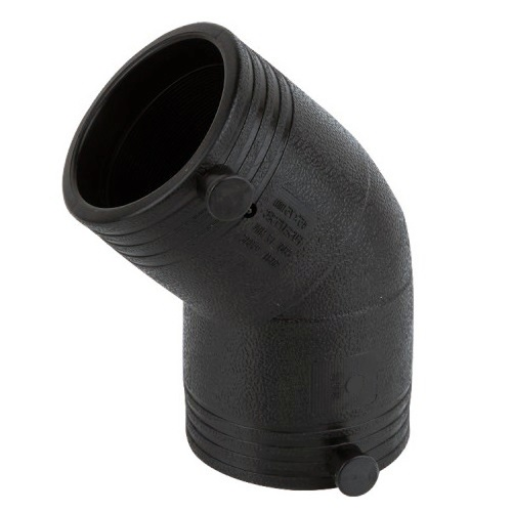
When shopping for HDPE electrofusion fittings, it is essential to compare prices from different suppliers to get the best deal without compromising quality. Therefore, check the prices charged by various suppliers. This will enable you filter products online by price allowing you go through a range of options with pocket friendly products up to premium fittings. Also, look for bulk purchase discounts or promotions to bring costs down. Finally, shipping costs and other applicable taxes should be considered before making a sound judgment. Reviews by customers who bought the same item earlier should not be ignored in your decision-making process. Besides reading customer reviews, ensure the specifications fit your project’s requirements.
Understanding the Price Range for Electrofusion Fittings
Prices of electrofusion fittings will vary by a wide margin depending on several factors, including material, size, and brand. Typically, their prices range from as low as $5 for small and simple ones to over $100 for extensive and specialized fittings. Bulk purchases often result in lower per-unit costs, thus making them more economical for larger projects. Also, many manufacturers avail different grades of fittings where premium prices are typically charged for higher-end materials endowed with advanced corrosion resistance or extended durability. It is prudent to compare specifications and warranties since they also impact these parts’ overall value and long-term cost-effectiveness.
Factors Affecting the Cost of Electrofusion 45° Elbow
Several factors influence the price of electrofusion 45° elbows:
- Material Quality: The prices of some manufacturing materials, such as HDPE (high-density polyethylene), will mainly depend on their quality. These superior substances are quite expensive owing to better chemical resistance and durability.
- Manufacturer Reputation: Products offered by reputable firms cost more because customers perceive them as high quality and reliable in a given sector. For instance, people are ready to pay extra prices for warranties associated with well-known brands.
- Size and Dimensions: The elbow fitting’s price depends on its diameter and other overall dimensions. Prices are usually higher for larger fittings since they require more material and have a complex production process.
- Purchase Volume: You can save significantly through economies of scale when buying items in bulk. Many sellers give discounts based on the quantities purchased, reducing the total costs incurred per unit item.
- Shipping and Handling: Shipping logistics could also impact pricing. Some locations will need special shipment considerations, which might add up costs, thus increasing the final product price.
Consequently, it is advisable to consider these factors when buying electrofusion 45° elbows for one’s project.
Why Choose High-Quality HDPE Electrofusion 45-Degree Elbow Fittings?
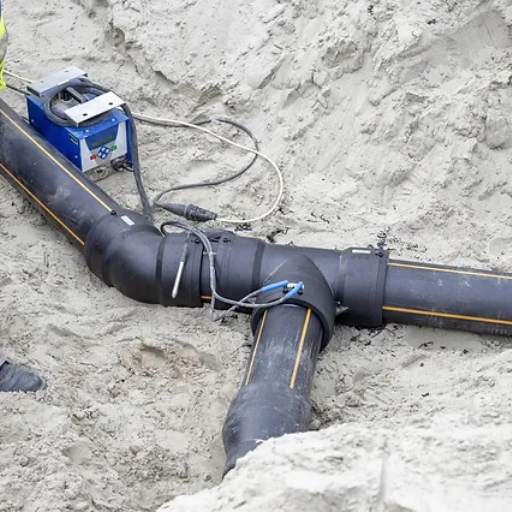
To obtain exemplary results and enhance its durability and longevity in different uses, selecting high-grade HDPE electrofusion 45-degree elbow fittings is advisable. The latter are made for use in harsh atmospheres so that they can resist chemicals or corrosion and prevent UV damage. Furthermore, there is a promise of secure and leakproof joints with the help of these reliable sealing methods, which reduce the risks of failure during installation. Moreover, premium quality fittings reduce replacement needs, hence paying off by lowering costs over time. Users who choose well-known trademarks also get performance warranties and have greater confidence in the reliability and durability of their piping systems.
Advantages of Using High-Quality HDPE in Electrofusion
- Durability and Longevity: High-quality HDPE exhibits remarkable resistance to impact, abrasion, and stress, ensuring long service life even under difficult working conditions. This characteristic reduces expenses related to maintenance and repairs, making it a cost-effective option for construction work.
- Chemical Resistance: HDPE is naturally resistant to an extensive range of chemicals, which is why it finds many applications within the industry. This feature plays a crucial role in preventing pipe degradation and subsequent failure in environments with corrosive agents.
- Ease of Installation: HDPE electrofusion fittings are designed for ease of fitting. This process produces uniform, strong joints while saving labor expenses, ensuring installations meet exacting standards without compromising system integrity.
These benefits will enable users to increase efficiency, reliability, and compliance with industry standards regarding piping system applications.
Ensuring Compatibility with HDPE Pipes and Fittings
Some factors to consider to make them compatible with HDPE pipes and fittings are as follows:
- Material Specifications: The pipes and fittings must be made of high-quality HDPE material that complies with industry standards such as ASTM D3350 or ISO 4427. This will ensure they work well together in many different applications.
- Size and Dimensions: Ensure that the nominal sizes and dimensions for the pipes and fittings agree. Consistent diameters are important since disparities can lead to poor flow or even leaks.
- Fusion Process: Learn about recommended ways of fusing HDPE components. Adequate training in electrofusion or butt fusion methods is essential for making joints that are strong enough not to leak.
Users who consider these aspects can operate their HDPE piping systems effectively and reliably, minimize failure risks, and prolong the service life of these installations.
Managing Your HDPE Electrofusion Fittings Stock
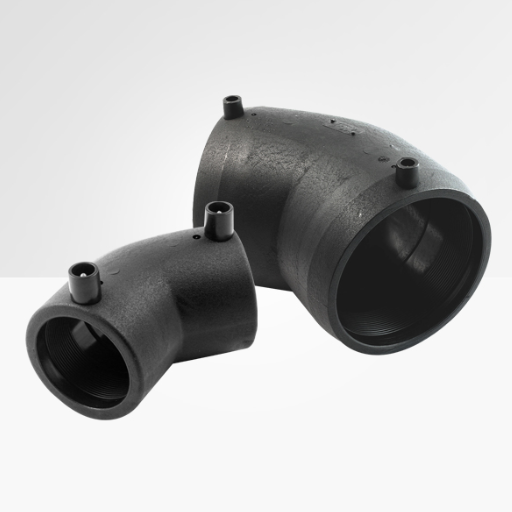
Efficient control of HDPE electrofusion fittings stock is indispensable for maintaining proper operations while minimizing project delays. Here is how you can have the correct stock levels:
- Inventory Assessment: Regularly go through your various stocks, taking special note of how each fitting is being used, leading on to what’s expected in the days ahead.
- Supplier Relations: Establish a good rapport with reliable suppliers so that they can restock your fittings in a timely manner. Have a list of preferred vendors against which materials for ordering purposes may be checked.
- Storage Conditions: Proper storage in a dry, cool place risks compromising the quality or performance of pipe connectors due to extreme temperature conditions and other adverse weather conditions, like direct sunlight exposure.
- Documentation: Keep an updated inventory level, purchase date, and expected delivery timetable until consumption has been noted, then replace them from the time they were bought.
Following these principles will result in a well-coordinated stock of HDPE electrofusion fittings, streamlining project activities while limiting disruptions.
Tools for Inventory Management
Optimizing the inventory of HDPE electrofusion fittings involves efficient management. Here are some tools that can help streamline this process:
- TradeGecko (QuickBooks Commerce): This tool has real-time inventory management, easy integrations with e-commerce platforms, and in-depth analytics. It automates the company’s inventory system and gives insights into stock levels, sales trends, and order fulfillment.
- Zoho Inventory: Known for its user-friendly interface, Zoho Inventory provides a range of features, including inventory tracking, order management, and reporting tools. It allows users to handle stock across multiple locations and syncs up with accounting software for smooth financial monitoring.
- Fishbowl Inventory: Intended for manufacturing and warehouse management purposes, Fishbowl also provides advanced inventory control capabilities like multi-warehouse tracking, barcoding, and reporting. Moreover, its integration capacities with QuickBooks or other ERP systems make it a strong choice for managing HDPE fittings stock.
Adopting these tools could significantly boost efficiency in managing inventories, resulting in smoother processes and successful project completions.
Tips for Efficient Stock Management
- Regular Inventory Audits: Regular audits help maintain accurate stock levels and recognize discrepancies early. This practice also prevents overstocking and stockouts, thus optimizing stock turnover.
- Utilize Forecasting Tools: Use demand forecasting software to determine product needs based on historical information and market trends. This allows you to carry enough stock without tying up capital and unnecessarily excess stock.
- Implement Just-in-Time (JIT) Inventory: Just-in-Time approach aims at minimizing holding costs by reducing unused stocks held up by business entities. JIT inventory administration closely aligns with production plans such that the materials only arrive whenever they are needed.
- Categorize Inventory: Use the ABC analysis method to classify your products based on factors like sales volume or revenue contribution, which helps you to focus majorly on those items that require attention from the managers.
- Use Barcode Systems: Implementing barcode scanning for inventory management can significantly streamline stock-taking, reduce errors, and improve data accuracy. This consequently leads to accurate and faster stock tracking.
In conclusion, these tips will guide a business in improving its inventory management processes, leading to an efficient and cost-effective approach to handling HDPE electrofusion fittings.
Common Issues with Electrofusion 45° Elbow and Their Solutions
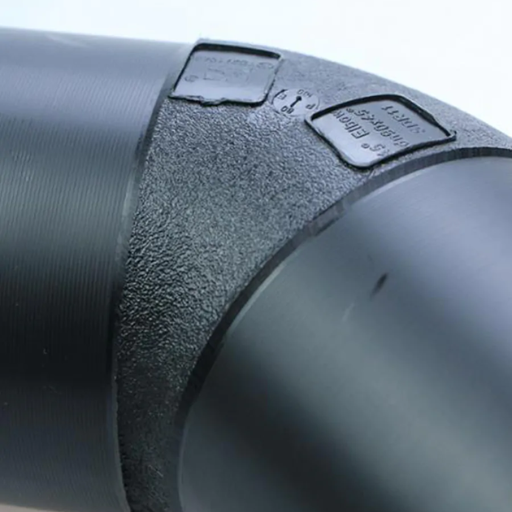
- Poor Fusion Joint Quality: Weak joints usually arise from one of the most common problems associated with inadequate heating or pressure during the fusion process.
- Solution: Before use, it is important to check heating elements for proper functioning and make certain that the electrofusion machine is well calibrated. Also, prepare and clean surfaces to be joined correctly.
- Alignment Problems: The misalignment of fittings can result in stressed joints, eventually breaking apart.
- Solution: When installing, employ alignment jigs or fixtures to attain accurate elbow positioning prior to fusing together.
- Environmental Factors: Electrofusion fittings may perform poorly when subjected to extreme temperatures or chemicals.
- Solution: Consider fitting standards given by manufacturers on environmental conditions with installations; this should also involve insulation or shields as protective measures if required.
- Contamination: Dirt, grease, or other contaminant on the fittings might adversely impact the fusion process.
- Solution: All surfaces should be cleaned properly prior to fusing. Use suitable cleansing agents and methods to guarantee a contamination-free environment.
- Inadequate Training: Failure by operators to get enough information may lead to incorrect installation procedures being used.
- Solution: Ensure that all personnel involved in the installation are adequately trained and familiar with the equipment and procedures. Providing regular training sessions can significantly enhance joint integrity.
By addressing these common issues, you can improve the reliability and longevity of electrofusion 45° elbows in your applications.
Identifying and Fixing Welding Issues
- Visual Inspection: Before attempting a repair, complete a visual check of the welds. Look for signs of partial melts, fractures, or the absence of regular bead shapes that may indicate problems with welding.
- Leakage Test: Check for leakages around joints after their installation by using pressure testing or soap solution as a means of checking. This testing can point out weak areas that are in need.
- Remedial Actions: If a weld joint is detected as defective, follow specific remedial actions. These might include cropping off the bad parts and re-welding them so that all preparations and procedures must be strictly followed during the resurfacing process.
- Record Keeping and Training for Operators: Effective welding procedure documentation and operator training would reduce the incidence of welding issues. Regular training ensures that every team player understands what should be done better and can see problems ahead of time so they can rectify them at once.
Maintenance Tips for Electrofusion Fittings
- Routine Inspections: Plan for regular visual checks on all electrofusion fittings to detect any damage signs, leakage, or stress. This prevents future occurrences since it guards against loose-fitting cases.
- Sanitation: Ensure cleanliness within the area where installation takes place. The fittings themselves should also remain clean from dirt. The presence of anything other than these materials will prevent proper bonding from taking place, so both fittings and the contact area have to be cleaned periodically.
- Environmental Concerns: Electrofusion fittings must not be exposed to harsh weather conditions like heavy rains, freezing temperatures, or prolonged exposure to ultraviolet light. These precautions will significantly increase the service life and performance of socket fittings.
- Follow Manufacturer’s Instructions: Always follow maintenance recommendations provided by the manufacturer who designed these items. Their directives will provide details specifically tailored to the materials being used in those products and technologies applied in the manufacturing process.
-
Keep Record of Changes and Repairs: Maintenance activities carried out, including examinations, repairs made, and alterations made, should be well documented. This becomes a good reference point for future maintenance and troubleshooting purposes.
How to Install and Weld HDPE Electrofusion 45-Degree Elbows
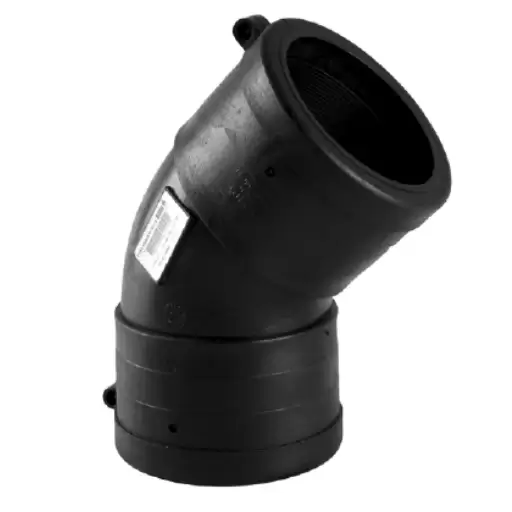
Several vital steps must be taken to get a solid and efficient joint when installing or welding HDPE electrofusion 45-degree elbows. Number one, prepare surfaces by ensuring they are clean and free from contaminants. Use an appropriate cleaner on both fittings and pipe ends to enhance adhesion. After this, place the elbow fitting on your pipe, ensuring they are correctly aligned to achieve the desired angle.
After positioning, insert the electric fusion coil wire into the fitting according to the manufacturer’s specifications. Connect your fusion welding machine to the fitting while ensuring all connections are tight. Set appropriate welding parameters such as temperature and timing according to machine guidelines. Then, give enough cooling time after starting the welding process before removing fittings for good bond formation. Afterward, visually check whether the connection is of good quality for installation continuation.
Step-by-Step Installation Guide
- Preparation: Collect all necessary tools and materials, including high-density polyethylene pipes, electrofusion fittings, cleaning agents, and an electrofusion welding machine.
- Surface Cleaning: Carefully clean the two surfaces, including the pipe and fitting, using a recommended cleaning agent to eliminate dirt, dust, or debris that can impair the quality of the weld.
- Alignment: Align the fitting at 45 degrees with the pipe to ensure that it is positioned correctly for the proper angle during installation.
- Inserting Coil Wire: Carefully follow the manufacturer’s instructions when inserting the electrofusion coil wire into the fitting. Ensure it goes to a specific depth that leads to optimized fusion.
- Setup Welding Machine: Make sure you have connected your electrofusion welding machine to a fitting, fastened all cables, and set up the machine according to the manufacturer’s written specifications.
- Welding Process: Start by activating your device to commence welding. You must follow this process closely to avoid compromising parameters such as temperature and duration, which should be maintained within the guidelines.
- Cooling Time: As per the manufacturer’s instructions, give enough time for the joint to cool down after the welding is finished, which helps in making a strong bond between two different materials.
-
Inspection: After the joint has cooled completely, perform a thorough visual inspection to ensure proper bonding before proceeding to additional installation tasks.
Tools and Equipment Needed for Electrofusion
- Electrofusion Welding Machine: This machine is required for welding as it provides the needed heat and pressure to create strong bonds between pipes and fittings.
- Electrofusion Fittings: Several types of Electrofusion Fittings are explicitly designed to handle different bits of piping, including elbows, tees, and reducers. These fittings have built-in cable coils for fusion purposes.
- HDPE Pipes: High-density polyethylene (HDPE) pipes are frequently used in electrofusion applications, and they require compatible fittings for better installation.
- Cleaning Agents: Appropriate cleaning solutions need to be used on the surfaces of pipes and fittings so that no impurities contaminate the welding area before welding takes place.
- Alignment Tools: Levellers and clamps may help keep the pipe straight during fusion welding between pipe and fitting.
- Protective Gear: An operator who is working on either a welding or cleaning procedure should put on safety gear like gloves, goggles, and nose guards.
-
Pipe Cutting Tools: To prepare pipe ends for fitting and ensure a clean edge for their subsequent fusion, one needs tools such as pipe cutters or saws.
Safety Measures During Installation
- PPE: Always wear the right PPE, including safety goggles, gloves, hard hats, and steel-toed boots, to protect yourself from any dangers that may occur during the installation process.
- Proper Ventilation: Ensure that the working area is well aerated, notably when using cleansers or other chemicals to avoid inhaling toxic gases.
- Electrical Safety: Before touching any electrical equipment, verify that all circuits are de-energized and properly grounded to avoid electric shock.
- Tool Inspection: Regularly check all tools for damage or malfunction. Only those tools with no defects should be used because they are less likely to cause accidents.
- Workplace Organization: Keep your work area free of clutter to minimize tripping over and keep materials and tools in safe places.
- Emergency Procedures: Learn about emergency procedures such as first aid measures and rescue routes in case of an accident happening around you.
Implementing these measures will ensure a safe working environment throughout the electrofusion installation process, decreasing risks and improving efficiency overall.
Reference sources
-
McElroy Manufacturing, Inc.
- They are a well-known manufacturer and educator in plastic pipe fusion technology. Their technical articles and manuals often cover various aspects of electrofusion fittings, including 45° elbows.
- McElroy Manufacturing
-
Georg Fischer Piping Systems
- As a leading provider of plastic piping systems and solutions, Georg Fischer offers detailed product catalogs, technical documents, and instructional videos on electrofusion fittings.
- Georg Fischer Piping Systems
-
Plastics Pipe Institute (PPI)
- PPI is a significant trade association representing all segments of the plastics piping industry. They publish technical reports, white papers, and guidelines that provide valuable insights into the applications of electrofusion fittings.
- Plastics Pipe Institute
Related Articles:Product Information for Electrofusion 45° Elbow





